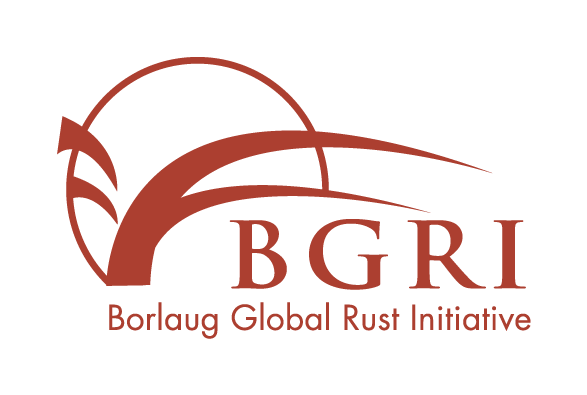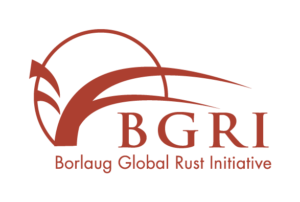On June 18, 2025, the Borlaug Global Rust Initiative (BGRI) hosted the 2025 Technical Workshop at the University of British Columbia in Vancouver, Canada. Held in partnership with the 17th International Cereal Rusts and Powdery Mildews Conference (ICRPMC), the European and Mediterranean Cereal Rust Foundation (EMCRF), and the Canadian Phytopathological Society, the workshop brought together experts in plant pathology, breeding, and disease surveillance from across the globe.
The workshop focused on emerging wheat disease threats and highlighted scientific and technological advancements in early warning, forecasting, and diagnostics. A central focus was the Wheat Disease Early Warning and Advisory System (DEWAS), a multi-institutional effort to provide real-time disease risk information to researchers and policymakers in East Africa and South Asia.
Opening and Welcome

Maricelis Acevedo
Director for Science, Borlaug Global Rust Initiative; Research Professor, School of Integrative Plant Science, Cornell University
Current Status of Wheat Disease Surveillance and Early Warning

Dave Hodson
Director, Wheat Disease Early Warning Advisory System (DEWAS);
Principal Scientist, CIMMYT
Abstract:
An overview of the current status of wheat disease surveillance and early warning will be outlined. Key highlights of work in East Africa and South Asia will be the focus. The current operational early warning system for globally important wheat diseases (wheat rusts, wheat blast, FHB) will be described. The success of the system in detecting emerging new threats to wheat production will be outlined, along with new advances in diagnostics, forecasting and risk assessment. Current knowledge on the emergence and interchange of pathogens between different geographical regions will be highlighted.
About the Speaker:
Dave Hodson is a Principal Scientist with CIMMYT, currently based in Nepal. For the last 20 years he has worked on developing and coordinating a Global Wheat Rust Monitoring System in response to the threat posed by wheat stem rust Ug99. The wheat rust monitoring system now covers approximately 30 countries in Africa, Asia and Latin America. He currently leads the Wheat Disease Early Warning and Advisory System (DEWAS) project, covering 8 countries in East Africa and South Asia. Through the DEWAS project advanced disease early warning is being implemented and improved pathogen and host diagnostics using molecular tools. His research focuses on the surveillance and monitoring of emerging cereal disease threats and the application of geo-spatial technology for improved decision support.
Forecasting Wheat Diseases in Africa and South Asia as Part of the Wheat Disease Early Warning and Advisory System

Jacob Smith
Postdoctoral Research Associate, Epidemiology & Modelling Group, University of Cambridge
Abstract:
Wheat diseases pose recurring threats to food security due to factors including climate change, land use change, and emerging virulent strains. Rapid response to a wheat disease outbreak requires a timely and accurate estimate of disease risk. Building on a century of literature, over a decade of research, and years of development in pilot studies, a Wheat Disease Early Warning and Advisory System (DEWAS) is now in operation for eight countries in Africa and South Asia. One component of the interconnected and collaborative DEWAS project is the risk forecasting of wheat diseases, including the wheat rusts and wheat blast. At the core of the forecasting system are components for meteorologically driven aerobiological spore release and dispersal from known sites of infection, environmental suitability conditions for infection for stem, stripe and leaf rust and an integrated epidemiological model for stem rust. Near real-time ground surveys are uploaded automatically by trained personnel as input to initiate the models and accessed via the Wheat Rust Toolbox. State-of-the-art seven-day weather forecasts for target countries are provided by the UK Met Office, from which daily forecasts of wheat rust risks are calculated. Forecasting is also expanding to include wheat blast in Africa. Key to making the system sustainable and adaptable are capacity building through training and modular software development. Evaluation shows that integrating near real-time surveys and modelling long-distance spore dispersal improves prediction accuracy. The flexible framework can also be applied to other airborne plant diseases.
About the Speaker:
Jacob Smith is a postdoctoral research associate in the Epidemiology & Modelling Group led by Prof Chris Gilligan at the Department of Plant Sciences, University of Cambridge in the United Kingdom. With a background in climate science, he is interested in the interactions of plant disease and climate, particularly aerial dispersal
Enhancing Our Ability to Rapidly Detect and Respond to Wheat Rust and Blast Outbreaks
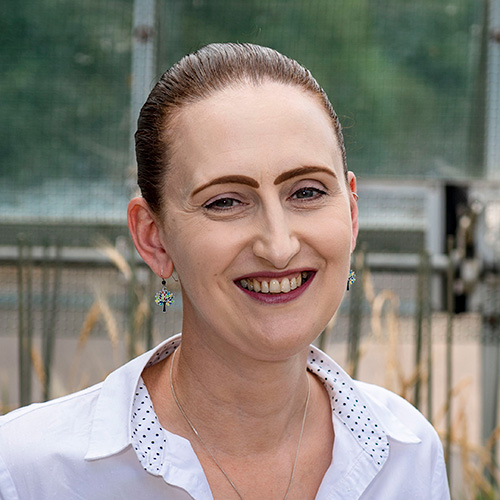
Diane Saunders
Head of the Crop Genetics Department, John Innes Centre
Abstract:
Authors: Diane G.O. Saunders, David P. Hodson and all DEWAS project partners
Wheat production is under constant threat from rapidly evolving, transboundary fungal diseases, with rust and blast diseases among the biggest concerns. Wheat rusts have ravaged wheat cultivation ever since the dawn of agriculture about 10,000 years ago, with new variants continually emerging and spreading rapidly on a global scale. In contrast, wheat blast is a recently emergent disease that can cause complete crop loss under favourable conditions, although, it remains more limited in geographical distribution. In both cases rapid and accurate diagnostics is essential to inform effective disease management decisions. To address this, within the DEWAS programme we have developed and deployed advanced genomic-based diagnostic methods across South Asia, South-Central and East Africa. This includes further development and deployment of the Mobile And Real-time PLant disEase (MARPLE) diagnostics platform, that has reduced the speed of strain-level diagnostics for yellow and stem rust to just 48 hours. This new rapid diagnostic system is now situated in multiple countries across East Africa and South Asia to keep track of the changing landscape of wheat rust populations. We also further developed and trialled a new point-of-care real-time diagnostic method for wheat blast to provide accurate and timely diagnostics in South Asia and South-Central Africa. This is further complemented by detailed genetic analysis using the T-Plex genotyping platform that provides genomic-based insight into the distribution of specific lineages of the wheat blast pathogen worldwide. Together, these advances are helping rapidly detect changes in rust and blast populations to ensure timely deployment of intervention strategies.
About the Speaker:
Prof. Diane Saunders is Head of the Crop Genetics department at the JIC leading research into (re-)emerging plant pathogens that pose a significant threat to agriculture. Diane is well known for her breadth of expertise in plant pathology that she has applied to study three of the world’s most important plant diseases: rice blast, potato late blight and cereal rusts, making many notable contributions. These include recent work evaluating re-emergence of wheat stem rust in the UK and development of pioneering techniques in pathogen surveillance; the “field pathogenomics” and “MARPLE diagnostics” techniques, where she was awarded the BBSRC Innovator of the Year award in the International Category (2019). She also works closely with industry to ensure her research discoveries are rapidly progressed to practical solutions for agriculture. In addition, her receipt of the Royal Society Rosalind Franklin Award in 2022 and OBE in 2024 reflects her passion for mentoring early-career researchers and advocacy for promoting gender parity in wheat research.
Harnessing the Power of Free and Open-Source Software for Disease Surveillance
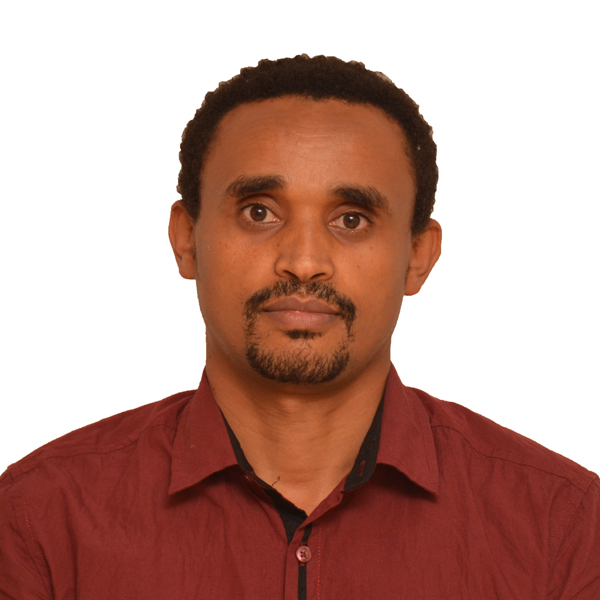
Yoseph Alemayehu
Research Officer, CIMMYT
Abstract:
Of the many constraints of wheat production, pests and diseases are important biotic constraints. Pest and diseases surveillance is one of the key activities carried out by National Plant Protection Organizations (NPPO’s). It helps to them gain knowledge of the prevalence of pests and diseases. Despite on-going efforts, however, gathering timely and quality-controlled data has been a challenge for many NPPO’s in developing countries.
Wilkinson et.al. (2016) argues for an urgent need of improving the infrastructure to support the reuse of scholarly data. They coined an acronym called FAIR data. FAIR data is data that meets the FAIR principles. These are Fundability, Accessibility, Interoperability and Reusability. Nonetheless, abiding to FAIR principles is not only limited by willingness to share data but the investment required to ensure acquisition and storage of quality data in a sustainable platform. This calls for affordable platforms that can be used by NPPO’s.
This paper reviews surveillance systems implemented by different organizations. It also discusses the power of Free and Open-source (FOSS) tools that are available but largely overlooked. FOSS is an application that is available for free, and its source code is available for review or further development. The paper also shares experience from the key wheat diseases surveillance activity in the Disease Early Warning and Advisory System (DEWAS) project that employed the Open Data Kit (ODK). The use of the ODK helped the collection of near-real time data to ensure timely information and made sample tracking possible.
About the Speaker:
Yoseph Alemayehu is with CIMMYT working as a research officer based in Addis Ababa. He coordinates the Surveillance of Host and Pathogen surveillance work package in the Disease Early Warning and Advisory System (DEWAS) project. He has studied GIS and Remote Sensing. He has also studied Crop Sciences at undergraduate level. His research interest revolves around implementing new tools to support disease surveillance. This includes employing Machine learning techniques in disease surveillance, detection of plant diseases using remote sensing techniques. The use of remote sensing spans from the use of in-situ handheld spectrometers, UAVs, Multispectral satellite sensors to use of Hyperspectral imageries.
First Detection and Genetic Characterization of Magnaporthe oryzae pathotype Triticum in Uruguay
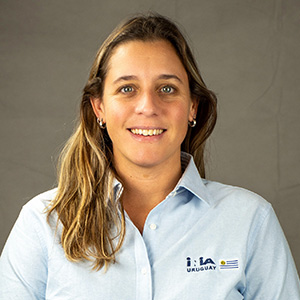
Paula Silva
Associate Scientist, National Institute of Agricultural Research (INIA Uruguay)
Abstract:
Wheat blast, caused by Magnaporthe oryzae pathotype Triticum (MoT), is an emerging and highly destructive disease in global wheat production. Previously confined to South America—especially Brazil, Paraguay, and Bolivia—MoT had not been reported in Uruguay until the 2023 season. That year, unusually favorable weather conditions in northwestern Uruguay, similar to those associated with outbreaks in Brazil, triggered intensive disease surveillance. Seventeen wheat spike samples showing blast-like symptoms were collected from 11 fields; nine tested positive for M. oryzae based on morphological traits. Four monosporic isolates were recovered, and three underwent molecular and genomic analyses. PCR confirmed their identity as MoT, and pathogenicity assays showed that all could infect both leaves and spikes of susceptible wheat genotypes. Whole-genome sequencing and phylogenetic analysis of 57 M. oryzae strains—spanning Triticum, Lolium, and Eleusine hosts—revealed that the Uruguayan strains are closely related to some Brazilian MoT isolates but genetically distinct from the B71 lineage implicated in Asia and Africa. Notably, isolates PyrUy10.1 and PyrUy14.1 shared 99.9% of SNPs, while PyrUy11.1 showed only 73% similarity, suggesting multiple introductions and the coexistence of genetically distinct lineages. These findings confirm the first detection of MoT in Uruguay and underscore the risk of cross-border pathogen movement. The presence of diverse MoT lineages presents new challenges for disease management and highlights the urgent need for ongoing monitoring in areas with favorable conditions for wheat blast development.
About the Speaker:
Paula Silva is an Associate Scientist at the National Institute of Agricultural Research (INIA Uruguay), where she focuses on wheat and barley pre-breeding. She holds a Ph.D. in Genetics from Kansas State University. Her research focuses on developing well-adapted, disease-resistant cereal cultivars by integrating molecular breeding, precision phenotyping, and international collaboration. Paula has extensive experience in both field and controlled-environment research and is actively involved in regional efforts to address emerging threats such as wheat and barley rusts, Fusarium head blight, and wheat blast. Her work aims to enhance the resilience and sustainability of cereal production systems in Uruguay and beyond.
Battling Wheat Rust in Kenya: The Rise of PstS16 Race and GWAS-Based Insights into Rust Resistance in CIMMYT’s Elite Germplasm
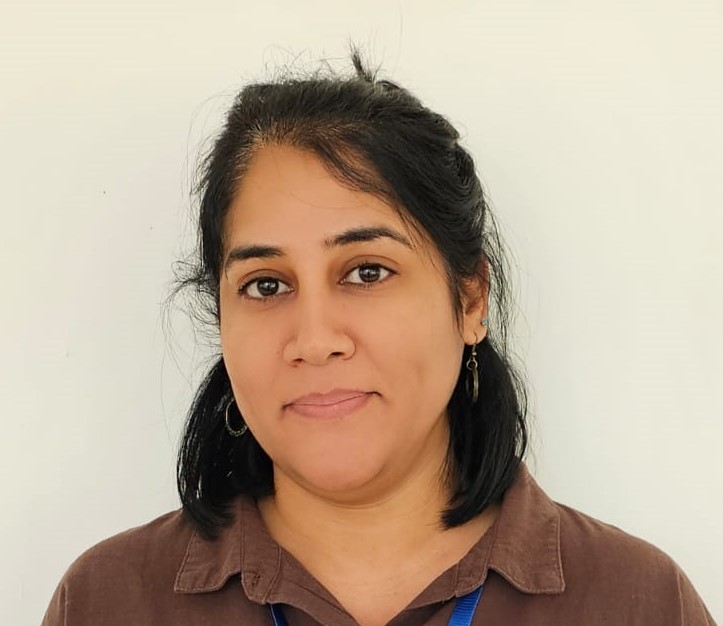
Naeela Qureshi
Wheat Rust Pathologist and Molecular Geneticist, CIMMYT
Abstract:
Stripe rust (Puccinia striiformis f. sp. Tritici; YR) and stem rust (Puccinia graminis f. sp. Tritici; SR) remain major threats to global wheat production due to evolving virulences and emerging races. This study reports the spread of the PstS16 stripe rust race (virulence: 1,2,3,(4),-,6,7,8,9,-,-,17,-,25,27,32,-,AvS,-) in Kenya, breaking resistance in previously resistant varieties. Race-typing and monitoring across major wheat-growing regions confirmed its spread, emphasizing the need for improved breeding strategies. To address this challenge, a genome-wide association study (GWAS) using a linear mixed model was conducted on 829 elite parental wheat lines from CIMMYT’s breeding program. The panel was field-phenotyped in Njoro, Kenya, over two years, where stripe rust data showed a 70% correlation, and stem rust showed a 60% correlation, indicating consistent disease responses. Genotyping with the 40K XT SNP array identified significant markers for stem rust resistance on chromosomes 1A.1 (88 Mb), 1A.2 (585 Mb), 1B (650 Mb), 1D.1 (10-12 Mb), 1D.2 (410-418 Mb), 2A (3-6 Mb), 2B (531 Mb), 2D (2.5 Mb), 3A (22-25 Mb), 3B (690 Mb), 3D (165 Mb), 4A.1 (2 Mb), 4A.2 (690-700 Mb), 4B.1 (66 Mb), 4B.2 (620 Mb),5A (687 Mb), 5B (538 Mb) 6A.1 (2 Mb), 6A.2 (615 Mb), 6B (618-620 Mb), 7A (697 Mb), 7B (621 Mb) and 7D (330 Mb) with several regions overlapping known SR genes (Sr8, Sr9h, Sr13, Sr22, Sr25, Sr38, Sr50, Sr58). For YR resistance, significant SNPs were identified on chromosomes 1A (580-592 Mb), 1B (682 Mb), 2A (744 Mb), 2B (26.8 Mb), 3B (23 Mb), 4B (670-672 Mb), 6A (7 Mb), 6B (98 Mb), 6D (8.6 Mb), and 7B (99 Mb) aligning with some of the known resistance genes; Yr29, Yr78, and Yr81. Candidate genes were identified within most QTL regions, providing valuable targets for marker-assisted selection. Further studies are underway to characterize these genomic regions.
Naeela Qureshi is a wheat rust pathologist and molecular geneticist at CIMMYT in Mexico, facilitating extensive research on wheat rust in Mexico and Kenya. Her role is critical in supporting the breeding and physiology teams of CIMMYT’s Global Wheat Program. She also focuses on unraveling the genetic components of rust resistance through Quantitative Trait Loci (QTL) mapping. Naeela uses advanced bi-parental recombinant inbred line (RIL) populations and develops molecular markers linked to rust resistance genes and QTL to improve marker-assisted breeding strategies.
Previously, Naeela was a Research Scientist-Molecular Genetics at Agriculture Victoria Research, Australia, specializing in next-generation sequencing (NGS) technologies such as targeted genotyping by sequencing (tGBS), RNA sequencing, and amplicon resequencing across diverse genetic populations and lines. She received her Ph.D. from the University of Sydney, Australia.
Monitoring of Wheat Rust Diseases and Its Significance in Disease Management in Nepal

Suraj Baidya
Senior Scientist; Chief of the National Plant Pathology Research Center, Nepal Agricultural Research Council (NARC)
Abstract:
Wheat is one of the major staple crops in Nepal, providing food security and income for millions of farmers. However, wheat production is significantly affected by various diseases such as rusts, Helminthosporium leaf blight, powdery mildews. Effective disease management is crucial to maintain yield and crop quality. One of the key components of disease management is disease monitoring, which involves regular observation, early detection and a disease alert system. Every year, systematic surveillance has been conducted in the major wheat production areas of Nepal utilizing the ODK app. Surveillance data indicates that the Himalaya of Nepal is a hotspot and potential site of origin for wheat pathogens. In recent years, surveillance has successfully detected the first appearance of stem rust race TTKTT (Ug99 race group) and Clade IV-F races TKKTF and TKFTF. Early detection has permitted regional awareness and preparedness and the testing of germplasm to identify vulnerability in advance of any outbreak. Increasing genetic diversity of both yellow rust and leaf rust populations underscores the need for intensified surveillance and research attention. Similarly, given the consistently increasing trend of powdery mildew and Helminthosporium leaf blight severity on released Nepalese genotypes in recent years, it is essential to develop wheat genotypes with broad-spectrum resistance to multiple diseases and diverse pathogen populations, particularly in context of Nepal.
About the Speaker:
Suraj Baidya is a senior scientist currently serving as the chief of the National Plant Pathology Research Center under the Nepal Agricultural Research Council (NARC) since last seven years. He has worked at NARC for the past 27 years on the field of plant pathological research works. His primary area of expertise is the identification and management of plant-parasitic nematodes in different crops. Additionally, for the past 15 years, he has been actively involved in monitoring wheat diseases—particularly rust diseases (with a focus on all three rusts)—as well as in pathotypes identification, providing disease early warnings system, training and research on its management strategies. Currently, he is engaged in research related alternate host plants that play a role in the lifecycle of rust pathogens. Furthermore, he is also engaged in the screening of wheat genotypes against diseases to support the development of resistant varieties.
Early Detection and Monitoring of Wheat Stem Rust Using Very High-Resolution Satellite Imagery in Ethiopia

Gerald Blasch
Crop Disease Geo-Spatial Data Scientist, CIMMYT
Abstract:
Wheat rusts, particularly stripe and stem rust, pose a significant threat to Ethiopia’s food security. In 2010, a stripe rust epidemic affected 600,000 ha, causing a loss of $250 million. In 2014, a stem rust epidemic affected 30,000 ha, causing ~100% crop loss. Early detection and control are crucial. Very high-resolution satellite (VHRS) imagery offers potential for crop disease early warning systems, allowing for new detection methods at early growth stages, potentially revolutionizing early warning and response systems. The capability of multispectral VHRS systems was assessed as a rapid, early disease detection tool for wheat stem rust. An on-station experiment with varying irrigation and fungicide management was conducted in Ethiopia at the Debre Zeit Research Center in 2023. Wheat varieties with differing rust resistance were planted, and Planet SkySat imagery was acquired over the experimental site, coordinated with in-situ visual disease inspections by pathologists. Our findings provide valuable insight into the capabilities of multispectral VHRS sensors for detecting, monitoring, and phenotyping the wheat stem rust disease at the plot level in general, and across healthy, mild, moderate, severe, and fully damaged disease situations, covering vegetative and reproductive growth stages. This research was the first time that satellite-based detection methods have been tested for stem rust. As wheat stem rust is now re-emerging as a disease of concern in Europe (and other regions), after an absence of over six decades, detection methods tested in Ethiopia may in the future find application and utility in other regions.
Gerald Blasch is an experienced Crop Disease Geo-Spatial Data Scientist at the International Maize and Wheat Improvement Center (CIMMYT), specialized in satellite earth observation, UAV, and GIS applications. He focuses on crop disease early warning systems, land use / land cover mapping, crop type mapping, yield estimation, and climate change. Gerald is passionate about R4D of remote sensing and GIS solutions using advanced data analytics for crop disease surveillance and forecasting, agricultural monitoring, and climate change risk assessments in Africa, Asia, and beyond. For instance, he assessed the potential of UAV and very high-resolution satellite sensors for wheat disease detection and phenotyping. He plays an important role in developing earth observation products for integration into wheat disease early warning and advisory systems. Gerald has ~20 years of experience working in academia and organizations such as CIMMYT, Newcastle University, GIZ, and GFZ Potsdam, excelling in multidisciplinary, (inter)national research projects.
Breakdown of Yr15 Resistance in the UK

Charlotte Nellist
Pathology Programme Lead, Niab
Abstract:
Authors: Huw R. Davis, Tansy Chia, Hayley Rhodes, Clare M. Lewis, Andrey Korolev, Lesley Boyd, Diane G.O. Saunders, Charlotte F. Nellist and Kostya Kanyuka
The United Kingdom Cereal Pathogen Virulence Survey (UKCPVS) was established in 1967 following a major yellow rust outbreak on the previously resistant wheat variety Rothwell Perdix. Since then, Puccinia striiformis f. sp. tritici (Pst), the causal agent of yellow rust, has been routinely monitored across the UK wheat growing regions.
In spring 2025, unusually high levels of yellow rust were observed by the Niab Northern trials team on wheat varieties rated as highly resistant at both the seedling and the adult plant stages. Similar reports and samples were received from across the industry. Pathotyping of three of these early-season isolates on a wheat differential line set confirmed that all three carried virulence to Yr15 – a major, broad-spectrum, all-stage resistance gene first identified in the 1980s and widely deployed worldwide. Genotyping using KASP markers revealed that Yr15 is present in many UK AHDB Recommended List varieties previously classified as resistant at the young plant stage. Collectively these account for at least 58.7% of the UK certified seed market, excluding farm-saved seed. MARPLE diagnostics genotyping performed on two of the early isolates (from varieties Champion and KWS Dawsum) indicate that the new virulent pathotype likely represent a locally evolved variant of the European PstS10 (Warrior -) lineage, rather than a recent exotic incursion. The widespread cultivation of Yr15-carrying varieties has likely exerted strong selection pressure on the pathogen population, facilitating the emergence of virulence in the current season. Ongoing work includes transcriptome and whole genome sequencing of these isolates to investigate the underlying genetic changes associated with the breakdown of resistance.
Charlotte Nellist is a group leader in plant pathology at Niab, Cambridge, UK. She joined the Niab Group in 2014 and her research to date has focused on understanding interactions between and characterising resistance against fungal, oomycete and viral plant pathogens, across a range of crop species. She is co-lead of the United Kingdom Cereal Pathogen Virulence Survey, monitoring yellow and brown rust on wheat (and until recently, wheat and barley powdery mildew) in the UK. She also manages the pathology programmes for national variety trials delivered by Niab, including cereals, oilseeds, pulses, potatoes, sugar beet, herbage.
Connect With Us
- Reach out to the BGRI at bgri@cornell.edu.
- Connect with BGRI on Facebook, X, or LinkedIn
- Sign-up for the BGRI Newsletter
